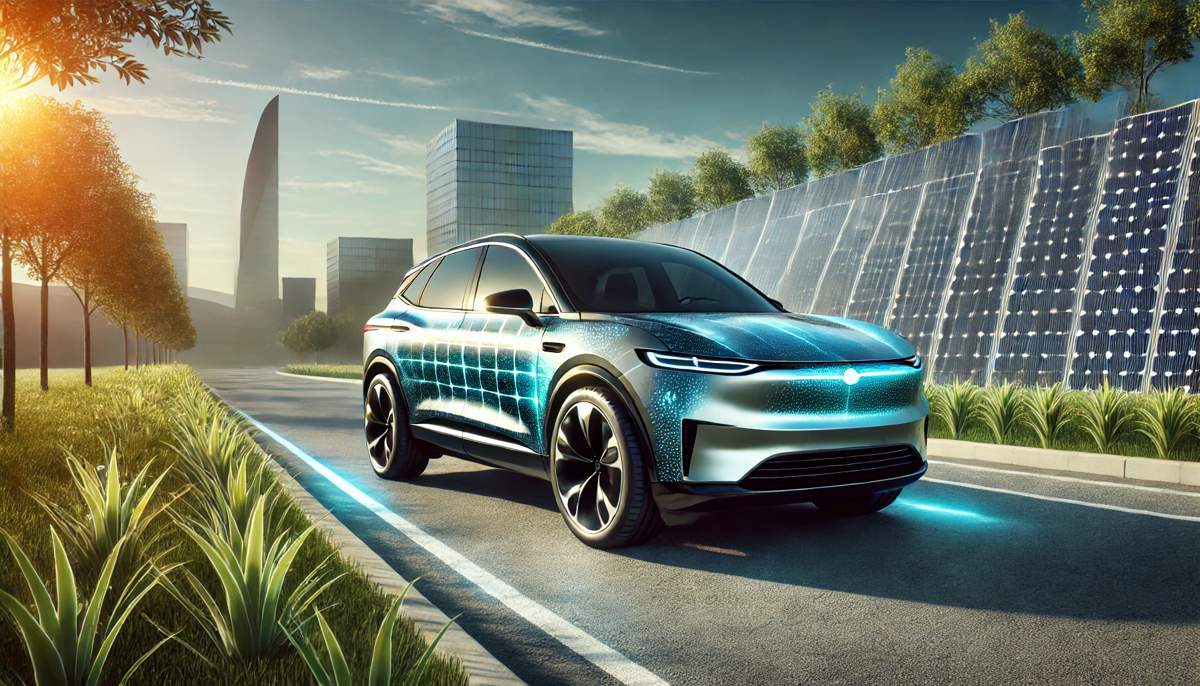Solar Paint could redefine the Electric Vehicle
Electric vehicles (EVs) have taken the automotive world by storm, but range anxiety and frequent charging stops still hold back widespread adoption. Enter solar paint – a ground-breaking innovation that could revolutionise how EVs generate energy.
Developed by Mercedes-Benz, this cutting-edge technology promises to redefine the relationship between vehicles and renewable energy, enabling electric cars to generate power directly from the sun.
A Thin Layer Packed with Potential
At the heart of this innovation is a solar paint system that integrates ultra-thin photovoltaic cells directly into a car’s bodywork. These cells, just 5 micrometres thick – thinner than a strand of human hair – weigh a mere 50 grams per square metre and boast an impressive energy conversion efficiency of 20%. This means that even a modest application, equivalent to the surface area of a mid-size SUV (approximately 11 square metres or 118.4 square feet), can generate enough electricity to drive over 7,450 miles per year under optimal conditions.
Unlike traditional solar panels, these cells are not limited to flat or uniform surfaces. They can be applied seamlessly to irregular shapes, ensuring maximum coverage across a vehicle’s exterior.
The photovoltaic system remains active around the clock, producing energy even when the car is parked or switched off. This energy is either channelled into the vehicle’s high-voltage battery for immediate use or stored for later, reducing dependence on conventional charging stations.
Efficiency Meets Sustainability
Mercedes-Benz’s solar paint isn’t just about performance; it’s also an environmentally friendly solution. Unlike traditional photovoltaic systems that rely on rare earth materials and silicon, this paint is composed of non-toxic, abundant raw materials.
This not only makes it easier and cheaper to produce but also simplifies the recycling process. For automakers and consumers alike, this is a win-win: reduced production costs and a smaller environmental footprint.
Furthermore, the versatility of solar paint opens the door to broad applications. Mercedes-Benz is currently working to adapt this technology for all exterior vehicle surfaces, regardless of their shape or angle. In the near future, this could mean cars entirely coated in solar paint, transforming every inch of the bodywork into a power-generating surface.
Key Benefits of Solar Paint:
- Increased Range: Significant reduction in charging stops, extending vehicle usability.
- Cost-Effective: Lower production and recycling costs compared to conventional solar modules.
- Sustainable: Free of rare earths and silicon, ensuring minimal environmental impact.
- Versatile: Compatible with various shapes and angles, maximising energy capture.
Real-World Applications
The potential of solar paint varies depending on location, weather, and driving habits, but the possibilities are promising. In Stuttgart, Germany, where the average Mercedes-Benz driver covers 32 miles per day, this innovation could power approximately 62% of daily journeys using solar energy alone.
In sunnier climates like Los Angeles, the benefits skyrocket. Drivers could achieve 100% solar-powered commutes, with excess energy redirected to home networks through bidirectional charging systems.
This surplus energy isn’t just a theoretical advantage. Bidirectional charging allows vehicles to act as mobile power stations, feeding electricity back into homes or grids when needed. In regions with abundant sunshine, this technology could reduce household energy bills and contribute to renewable energy grids.
Overcoming Challenges and Unlocking the Future
While the concept of solar paint is undeniably exciting, practical implementation comes with hurdles. The energy output depends heavily on geographical location, sun exposure, and shade levels. Moreover, optimising the paint’s durability to withstand weather conditions and wear over time will be crucial for widespread adoption.
Mercedes-Benz’s research team is actively addressing these challenges. Their focus lies not only on refining the technology for efficiency but also on ensuring that it can be integrated into mass production. As the automotive giant continues to innovate, solar paint may soon become a standard feature on EVs, marking a pivotal step towards a greener, more self-sufficient future.
A Greener Road Ahead
Solar paint has the potential to transform electric vehicles into self-sustaining machines, reducing reliance on external charging infrastructure and fossil fuels. As automotive and renewable energy technologies converge, innovations like these are reshaping the future of mobility.
With continued investment and development, the dream of energy-independent vehicles is no longer a distant prospect—it’s just around the corner.




















